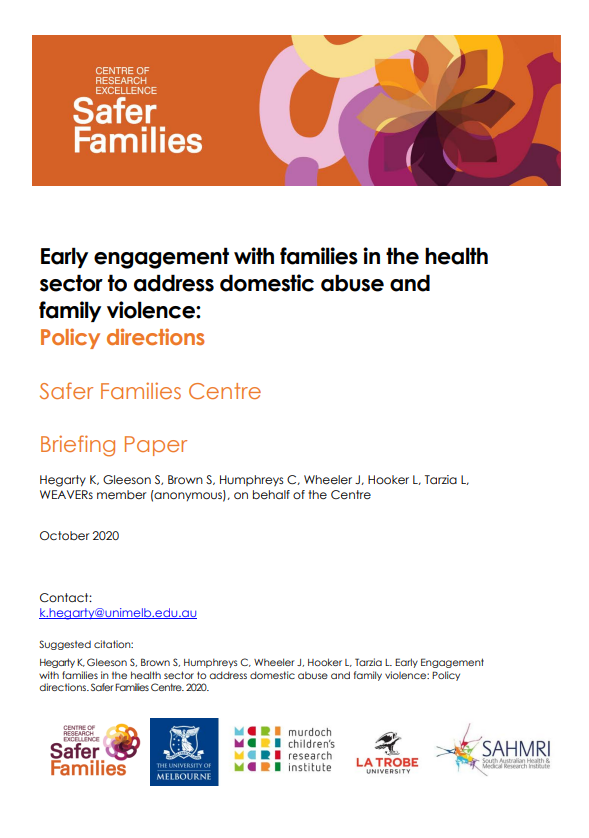Early engagement with families in the health sector to address domestic abuse and family violence: Policy directions
This paper aims to discuss with policy makers and health service managers, early engagement in the health sector to address domestic abuse and family violence (DAFV), particularly in the context of social recovery from the pandemic. The Australian Government and State governments have prioritised keeping families safe through implementation of the National Plan to Reduce Violence against Women and their Children 2010- 20221 and through recommendations arising from Inquiries and a Victorian Royal Commission.2 Despite these initiatives, there remains a gap in terms of policy and practice, with the health sector lagging behind other sectors to engage with families experiencing DAFV. This paper outlines the background underpinning the need for work in the health sector, the evidence to engage and respond to survivors and the actions for transforming health system policy. In this paper, we draw on the largest evidence base for the health sector, that of men’s use of DAFV against female partners, although we are aware that men are also victims and DAFV occurs in same-sex relationships. With a focus on survivors in this paper, we plan to disseminate separate papers on men who use DAFV and children experiencing DAFV. We also acknowledge the role of cultural and historical trauma that can impact individuals and communities across generations in addition to experiences of individual trauma.


